There continues to be some great manga making its way into English translation, from the latest award-winning hits to classics either being reprinted in lovely new editions, or coming out for the first time. I apologize for the lateness of this biannual installment, but I hope you enjoy it, and that it helps guide your own manga reading for the next couple of years.
This ranking is done in much the same way as with my Gaming Selections, with honorable mentions and a top three. After each manga’s title is the author(s), the North American publisher, the first year of Japanese serialization, and the number of volumes I’d read roughly up until the end of December 2022 (followed, in parentheses, by the total number of Japanese volumes). Series printed in omnibus, kanzenban, or similar editions are denoted with an asterisk (*), but the numbers reflect the original volumes as they were first printed in Japan. All of the cover images used here came from Right Stuf or the publisher’s website. Finally, there are no repeats from previous years’ lists in either the honorable mentions or the top ten, even if I was still reading (and loving) a particular series.
Honorable Mentions:
• Fist of the North Star* – For it’s pulpy, gritty action and likeable cast.
• Forbidden Scrollery – For its authentic and entertaining tales from the world of Touhou.
• Orochi – For its dark and entertaining tales of humans and the macabre.
• The Poe Clan – For its dreamlike, tragic aura and old-school shoujo flavor.
• World End Solte – For its ample imagination and characters only Mizukami can write.
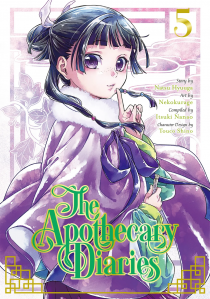 The Apothecary Diaries
The Apothecary Diaries
Natsu Hyuuga & Nekokurage
Square Enix | 2017 | 6 (of 10+)
Adapted from the light novel of the same name, The Apothecary Diaries follows the adventures of Maomao, an apothecary’s daughter who leaves her town’s pleasure district to serve at the emperor’s palace. There, she works as a poison tester and lady in waiting to one of the concubines, while utilizing her knowledge of medicine, and of human nature, to solve mysteries. Frequently joining her on her adventures is another palace resident, the eunuch Jinshi, who has a few secrets of his own. This beautifully drawn adaptation is told largely within Maomao’s train of thought, which takes some getting used to, but ends up working very well with the mystery angle. A fun series with a little comedy and fanservice sprinkled about, but nothing too out of place.
 Asadora!
Asadora!
Naoki Urasawa | Viz Media | 2018 | 6 (of 6+)
Heroines in Urasawa manga are often spunky and determined, but almost always play second fiddle to the leading men in whatever series they appear in. Not so in Asadora!, which follows the life of Asa, a girl orphaned by a typhoon who comes to love airplanes while rescuing her surviving siblings. Oh, and have I mentioned that at the center of this disaster is a mysterious kaiju? As the years pass, Asa and various others become involved with efforts to research, protect Japan from, and try to understand this literal monster. Though the core plot is more fantastical than other Urasawa stories, his penchant for creating complex, interweaving subplots and handling of a large, diverse cast is as fine as it ever was. When all is said and done, this might be his best series. Definitely one to keep an eye on.
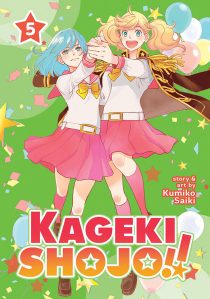 Kageki Shojo!!
Kageki Shojo!!
Kumiko Saiki | Seven Seas | 2015 | 6 (of 10+)
Inspired by the real-life Takarazuka Revue, this series follows Ai, a sullen former idol, and Sarasa, a tall and energetic ray of sunshine, as they attend the Kouka performing arts school. Along with their classmates, the eventual goal is to join the all-female Kouka musical theater company, but getting there is no walk in the park. On top of classes on acting, dance, and other such subjects, the girls contend with everything from bullying, to eating disorders, to confronting past traumas and disappointments. Though this series doesn’t shy away from the harsh realities of pursuing a career in such a competitive and demanding field, the moments of hope and joy that arise in the meantime, plus the characters themselves, make this a journey worth embarking on. If you’re interested in picking up this series, I highly recommend starting with its direct predecessor, Kageki Shojo!! The Curtain Rises, so that you don’t miss out on a single moment.
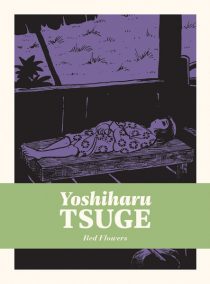 Red Flowers
Red Flowers
Yoshiharu Tsuge | Drawn & Quarterly | 1967 | 1 (of 1)
The very first manga I ever remember reading was a story by Tsuge-sensei, in the pages of the alternative comics anthology RAW, so I was thrilled when Drawn & Quarterly announced their seven-volume collection of this important mangaka’s works. This second volume is more accessible than the first, The Swamp, which primarily collected early works. Among the stories in Red Flowers are a handful of travelogues, detailing rural locales and people that aren’t often seen in manga. The purely fictional stories are affecting, quiet with hidden complexities, and the often lush art strongly resembles Shigeru Mizuki’s (for good reason; Tsuge-sensei was once Mizuki-sensei’s assistant). Extensive translation, cultural, and historical notes are included in the back of the volume, putting these tales into context. A must-have for those interested in the history of gekiga, or “alternative manga”.
 Shuna’s Journey
Shuna’s Journey
Hayao Miyazaki | First Second | 1983 | 1 (of 1)
Although more like an illustrated short story than a comic, Shuna’s Journey is an early work by one of Japan’s greatest living talents, and displays a glimpse of what was then to come. The story, based on a folktale, tells of Shuna’s quest to find the golden seeds that he hopes will feed his people. The sights he sees, and the secrets he uncovers, along the way are pure Miyazaki: equal parts fantastic and horrifying. In many ways, Shuna’s Journey feels like a dry run for Nausicaä of the Valley of the Wind, much like how Katsuhiro Otomo’s Domu preceded Akira. Even if you don’t care for the simple story, the gorgeous full-color artwork makes this a lovely addition to any manga or Miyazaki fan’s libary.
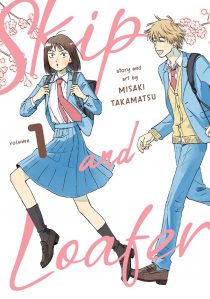 Skip and Loafer
Skip and Loafer
Misaki Takamatsu | Seven Seas | 2018 | 6 (of 7+)
Mitsumi is an ambitious girl from a small town who moves into her aunt’s Tokyo digs to attend a top-tier high school. One of the first people she meets is Shima, an outwardly friendly guy who, as it turns out, is popular with the girls in his class. Lest you think this is just another high school rom-com, think again. Mitsumi and her classmates are well-rounded, realistic individuals who may remind you of your own high school buddies more than characters from other series, and what romance there is reveals itself slowly, and in a very natural manner as well. That latter observation is true for the friendships as well, a ready acknowledgement that such things often take time to develop. One risk of Skip and Loafer is that it may very well spoil you for all other high school rom-coms, but it’s a risk worth taking.
 Spriggan
Spriggan
Hiroshi Takashige & Ryoji Minagawa
Seven Seas | 1989 | 2 (of 11)*
Imagine if one of Katsuhiro Otomo’s manga assistants was tasked with creating an action-adventure series inspired by Indiana Jones, and the results might be something like Spriggan. This seinen manga tells the story of Yu Ominae, one of a handful of special agents called Spriggans who assist the organization Arcam in finding and sealing away harmful ancient artifacts called ooparts. Yu and his fellow agents frequently find themselves in the crosshairs of not just nation-states, but a secretive arms manufacturer called Trident. The action is intense and well-paced, and the art, like that in so much manga from the late 80s, is heavily Otomo-inspired. Yu is a cheeky teenager prone to cheesy one-liners, but he and the rest of Spriggan‘s heroes and heroines are a likeable bunch.
 Third Place
Third Place
Laid-Back Camp
Afro | Yen Press | 2015 | 12 (of 14+)
Iyashikei, or “healing”, series are often hit or miss with me. That said, I went into Laid-Back Camp fully expecting to like it, but not love it. As it turned out, I loved it. Part of this is because, being a former camper myself, the subject matter was something I can relate to, but the other part is that it’s simply a heartwarming, funny series with a brilliantly realized cast. The series starts with Rin Shima, a high schooler, camping out on her own when she encounters a girl roughly her age, Nadeshiko Kagamihara. They share a meal, and it’s not long before Nadeshiko gets bit by the camping bug. Throw in a tiny school club, Rin’s sweetly meddlesome friend Ena, a host of other colorful characters and situations, and an assortment of lush, real-world locations for camping trips, and you have a series that lives up nicely to its title. The background art, especially in the earlier volumes, can often be difficult to parse with its line-heavy shading, but don’t let that stop you from giving this series a try.
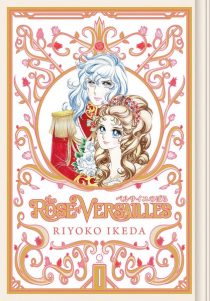 Second Place
Second Place
The Rose of Versailles
Riyoko Ikeda | Udon Entertainment | 1972 | 10 (of 10)*
Even after this legendary manga was finally, unexpectedly licensed, then released after a very long delay, it took me awhile to get around to reading it. I can pleasantly say now that The Rose of Versailles lives up to the hype. This historical drama tells the life story of Marie Antoinette, from her leaving her native Austria up to her death by guillotine, but that’s not all. A fictional character, Oscar François de Jarjayes, is the true star of this tale. A woman raised to take on a man’s role as an officer in the Royal Guard, Oscar serves her lady and the court while wrestling with romantic entanglements, becoming embroiled in scandals and political disputes, and eventually getting caught up in the French Revolution. Oscar is one of the most famous shoujo manga characters of all time, and through her beauty, heroism, and humanity, it’s not hard to see why. On top of all that, this engaging series features some of the most gorgeous 70s-era shoujo art ever featured in translated manga, and Udon’s presentation shows great passion and care. This release was well worth the wait.
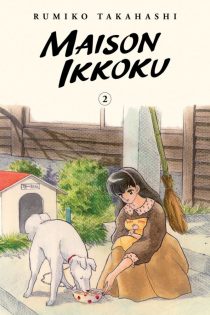 First Place: Manga of the Year
First Place: Manga of the Year
Maison Ikkoku
Rumiko Takahashi | Viz Media | 1980 | 15 (of 15)*
Although The Rose of Versailles blew me away with its craft and storytelling, I must play favorites with this year’s top pick. Rumiko Takahashi’s comedic masterpiece, Maison Ikkoku, is a series very near and dear to me, as one of the first that my husband and I bonded over back when we were dating. Between us, we collected Viz’s first edition run of the series, back when they gave each volume an individual title, and enjoyed this slow-burn romance. Some twenty-odd years later, Viz has rereleased Maison Ikkoku in a beautiful new edition, and this time, it’s 100% complete, with the one excised chapter that didn’t make it into the first or second editions added back in. Given that I already had fond memories of this series, I dove back into Maison Ikkoku wondering, above all else, if it has held up. Happily, I can report that it has.
The main character of Maison Ikkoku is Yusaku Godai, who failed to make it into college and has thus been spending the following year working toward trying again. He lives in the ramshackle apartment building of the title with a variety of noisy, and nosy, neighbors and is on the verge of moving out when the property’s new manager shows up one day. This manager is Kyoko Otonashi, a gorgeous young woman whom Godai instantly falls for. Having changed his mind, he does his best to put up with his neighbors and get to know Kyoko better. Eventually, he learns a devastating truth about Kyoko: she is a widower who hasn’t yet moved on from her husband’s death.
Lest you think this is a heavy drama, be assured that this is absolutely not the case. Takahashi-sensei is famous for her ensemble comedies, and Maison Ikkoku nicely balances its dramatic elements with tons of humor. One thing which does separate this series from the likes of Ranma 1/2 is that the main couple makes slow and distinctive progress throughout, and the passage of time and through life’s milestones lends a realness to Maison Ikkoku‘s setting that’s missing from her shounen works. As with other manga that are this old, some things haven’t aged well, but otherwise this remains a classic that I will confidently continue recommending for many years to come.